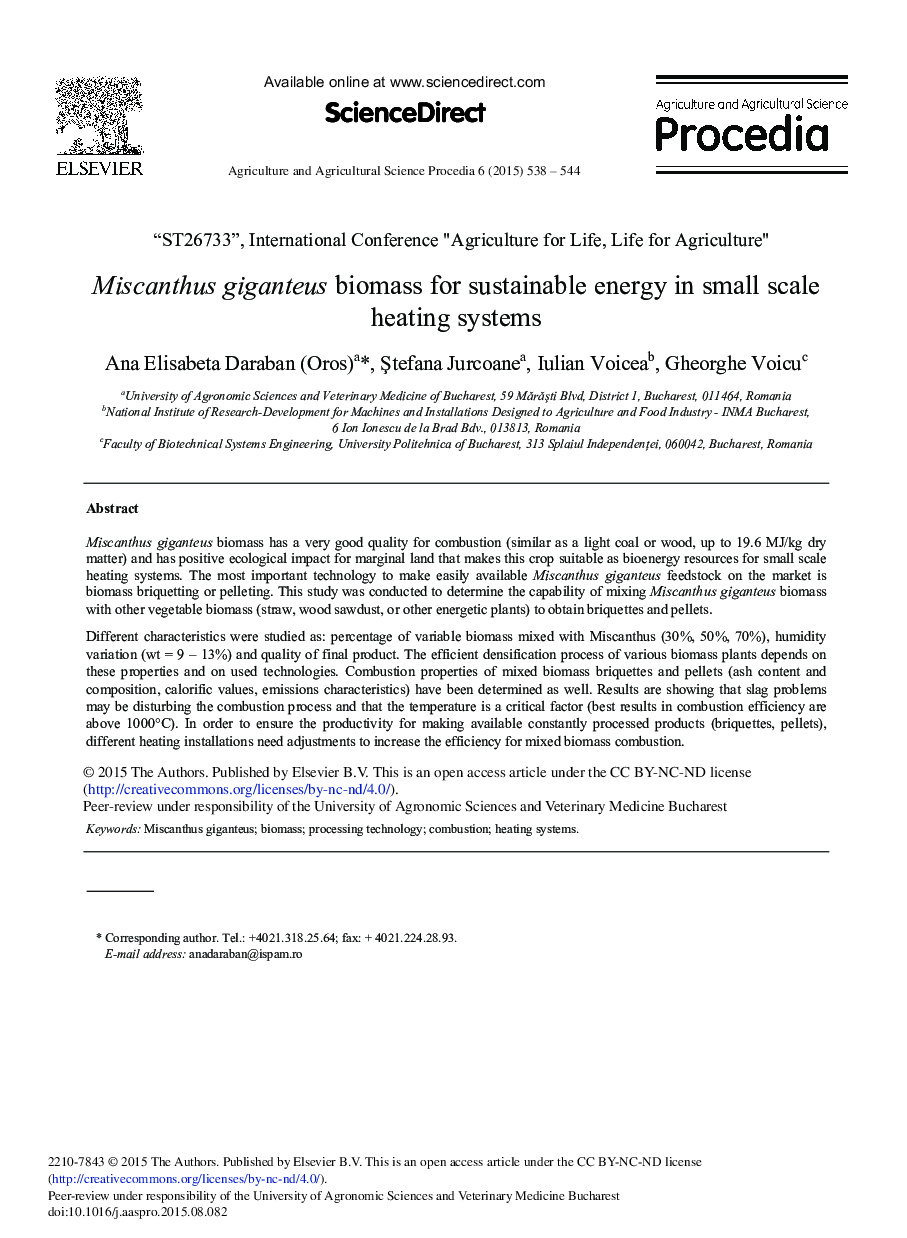| Article ID | Journal | Published Year | Pages | File Type |
|---|---|---|---|---|
| 4492478 | Agriculture and Agricultural Science Procedia | 2015 | 7 Pages |
Miscanthus giganteus biomass has a very good quality for combustion (similar as a light coal or wood, up to 19.6 MJ/kg dry matter) and has positive ecological impact for marginal land that makes this crop suitable as bioenergy resources for small scale heating systems. The most important technology to make easily available Miscanthus giganteus feedstock on the market is biomass briquetting or pelleting. This study was conducted to determine the capability of mixing Miscanthus giganteus biomass with other vegetable biomass (straw, wood sawdust, or other energetic plants) to obtain briquettes and pellets.Different characteristics were studied as: percentage of variable biomass mixed with Miscanthus (30%, 50%, 70%), humidity variation (wt = 9 – 13%) and quality of final product. The efficient densification process of various biomass plants depends on these properties and on used technologies. Combustion properties of mixed biomass briquettes and pellets (ash content and composition, calorific values, emissions characteristics) have been determined as well. Results are showing that slag problems may be disturbing the combustion process and that the temperature is a critical factor (best results in combustion efficiency are above 1000 °C). In order to ensure the productivity for making available constantly processed products (briquettes, pellets), different heating installations need adjustments to increase the efficiency for mixed biomass combustion.
